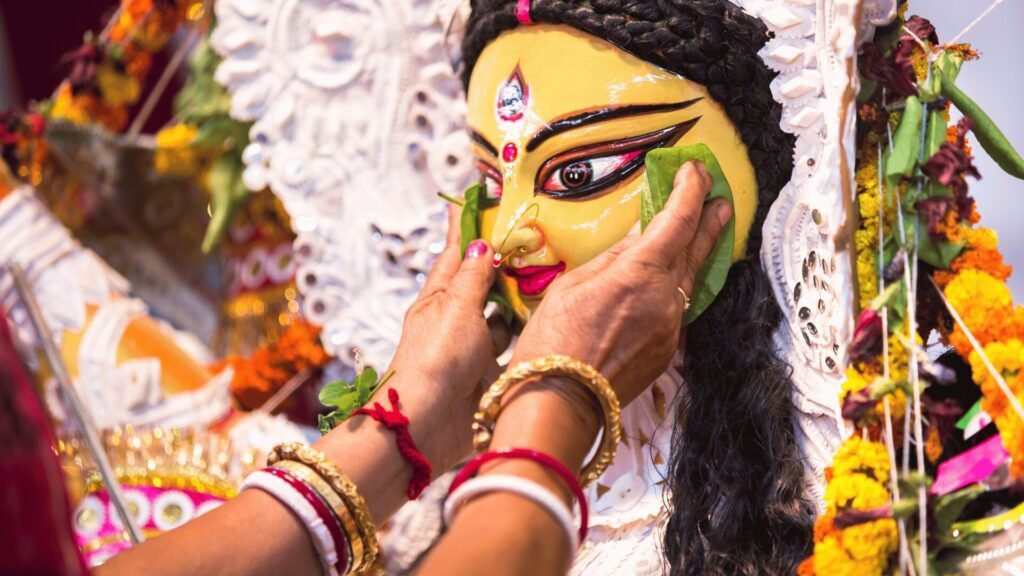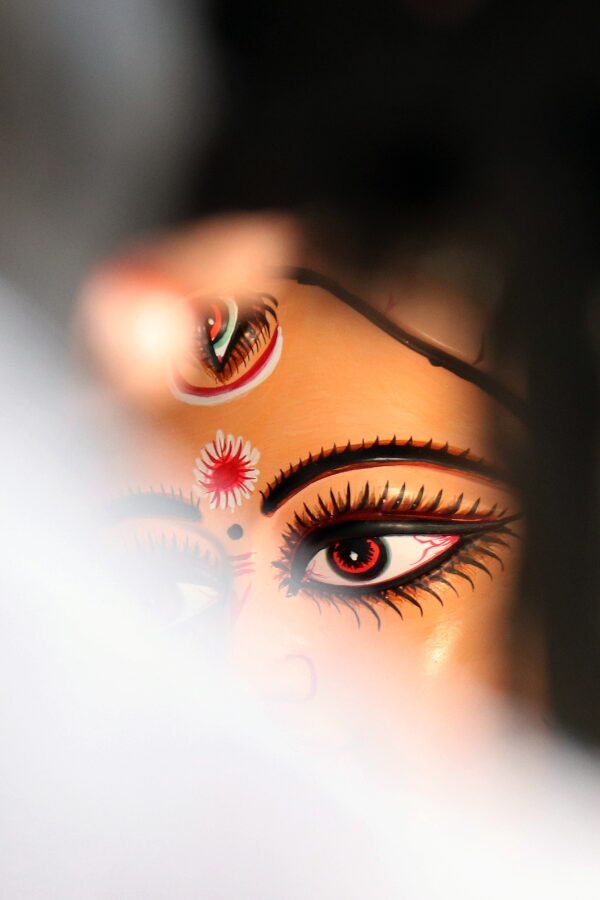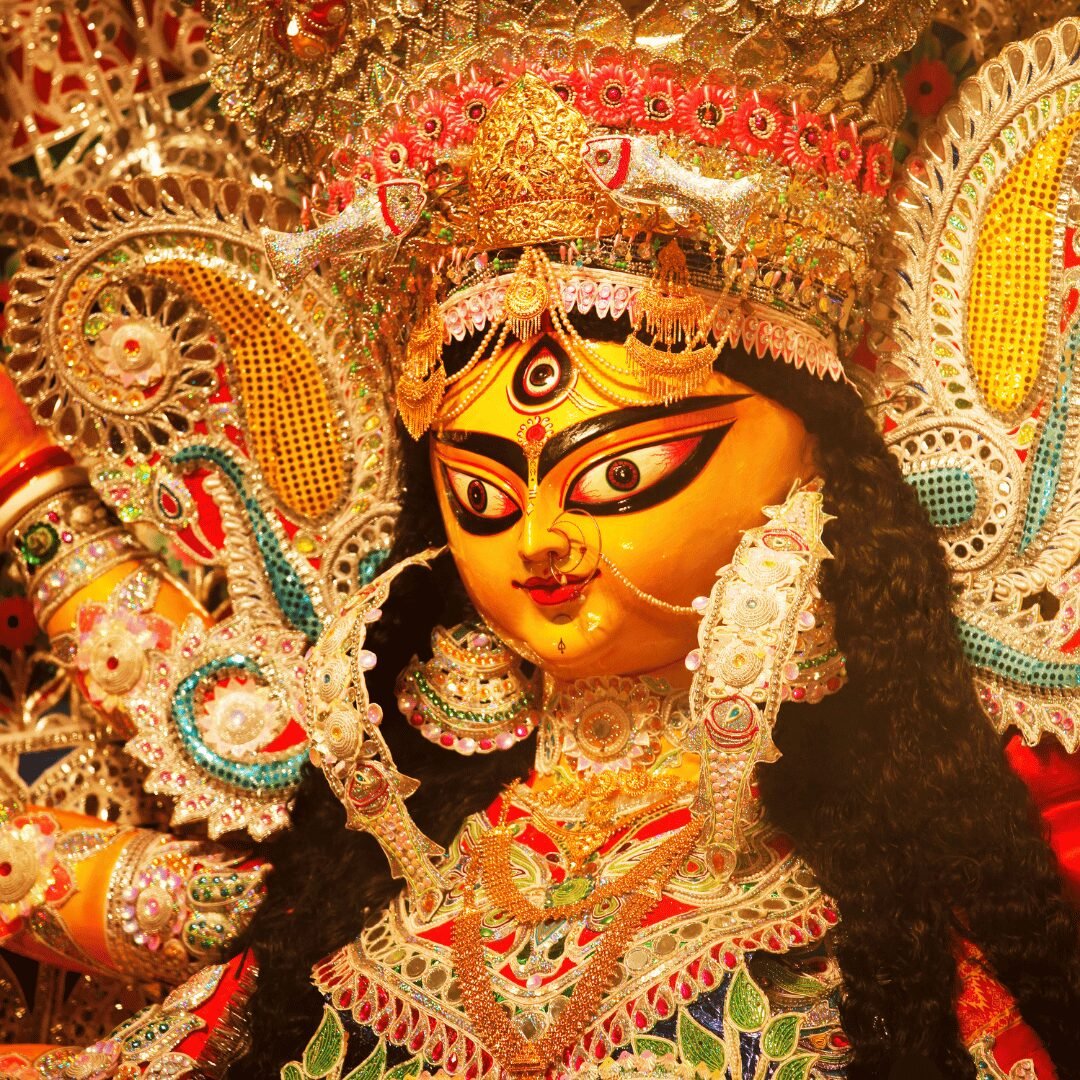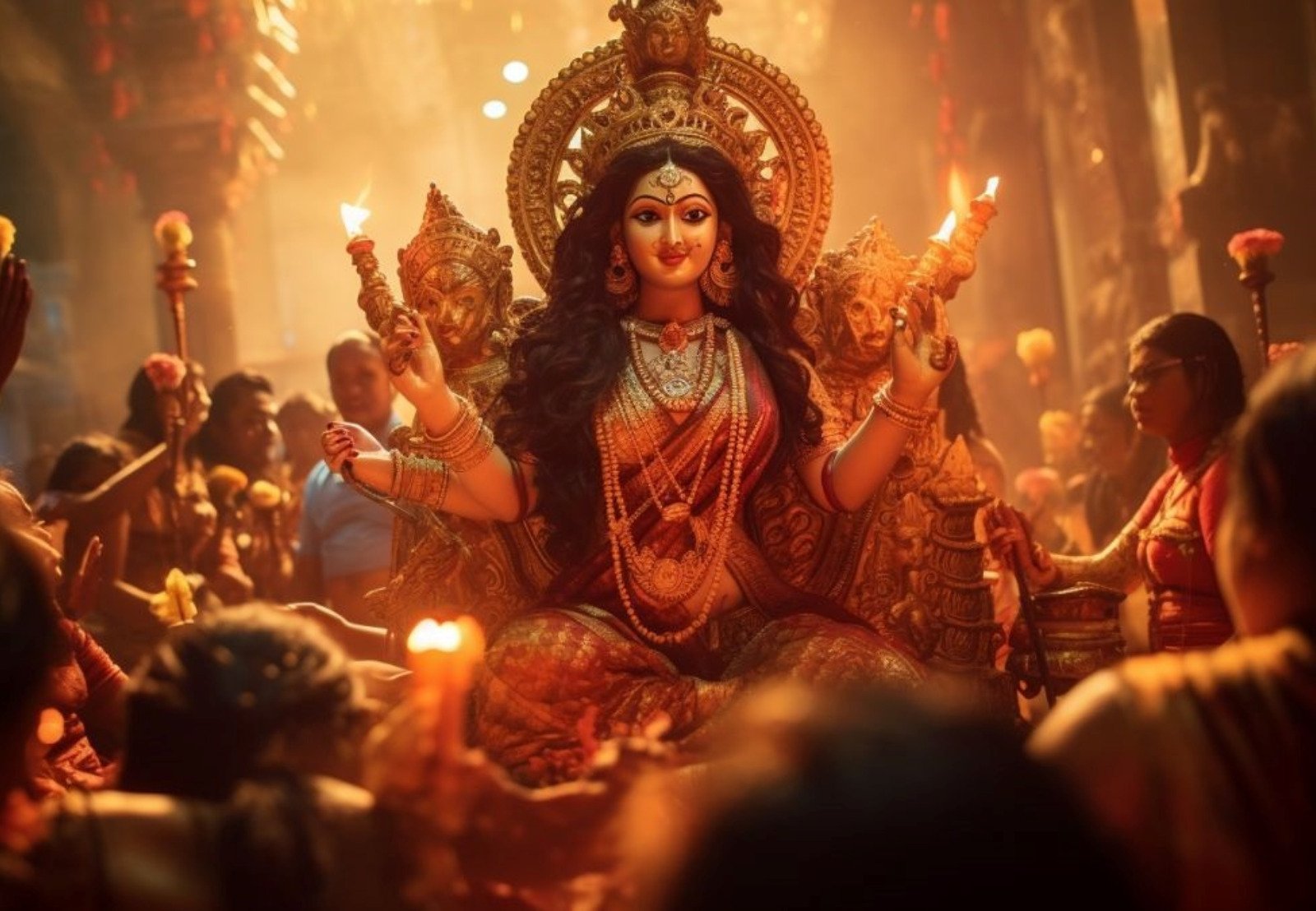All About Durga Puja That Every Indian Must Know. Mythology, Culture And More!
Shataghnee Chanda
November 28, 2024. 4 minute Read
A week to do until she arrives!
Durga Puja is more than just a religious occasion; it represents the greater themes of spiritual awakening, divine feminine strength, and the unification of various cultures and regions. It’s an embodiment of emotional resistance, power, and embracing good over evil.
"
As we dive into the larger mythological story of Goddess Durga’s creation and rich cultural tapestry involved with it, we will eventually dig deeper into India’s cultural and spiritual significance.
Be with The One Liner, and uncover the mythological fascinating facts about Durga Puja.
Origin of Maa Durga
Mythology, Creation and Purpose
The story of Durga Puja can be traced back to very ancient Hindu scriptures, especially Devi Mahatmyam. According to mythology, the Gods were in distress, as the strong demon Mahishasura had been made invincible by a boon. With his strength, Mahishasura began to terrorise the tripartite realms, blanking the gods – even challenging the heavens.
But, there was a twist in the boon. Mahishasura will not be killed by a Male figure (Implicitly, He can only be finished by a Female figure).
In a time of crisis, the Gods assembled – Brahma, Vishnu, and Shiva – and channelled their divine energies to create a sub-human: Goddess Durga. They imagined her as strength, grace, and valour; and endowed her with weapons and powers.
Here is when Lord Durga arrived!
Goddess Durga rode to battle a lion, and engaged in warfare against Mahishasura for nine days and nights, ultimately defeating the demon on the tenth day, Vijaya – Dashami.
The event not only signifies good over evil but also it reveres the divine feminine sense of empowerment.
The celebration of Durga Puja electrifies Indians with love, laughter, joy, and fun. But apart from all this fun; there are rituals and practices that keep us overjoyed during Durga Puja.
Rituals and Religious Practices around Durga Puja
Durga Puja has a wealth of rituals with deep meanings. Here we will address some interesting rituals:
1. Bodhon (Invocation)
The initiation of the festival entails the referencing or calling upon Goddess Durga to come down from her heavenly abode to grant her blessings to the same on earth. This ritual represents the calling down of divine energies upon the earth.
2. Mahalaya
Durga Puja ceremoniously begins with Mahalaya. It is on this day that Goddess Durga is said to descend to earth.
On this day, devotees chant parts of the Chandi Path and invoke the Goddess. The painting of eyes upon the idol of Durga on this day is quite significant as it makes the idol a present being, as in the divine presence.
3. Kumari Puja
Young females are worshipped as Goddess Durga during Durga Puja. It is a reminder of the importance of the feminine divine that serves to represent purity and spiritual power, in a predominantly male dominated society.

4. Sindoor Khela
On the last day of the festival during Durga Puja married women smear vermilion or sindoor on each other, or many of them smear themselves after deciding who is more blessed to receive the first smear of vermillion.
This ritual associates marital bliss, strength, and women’s powers make them capable of preserving and nurturing life.
5. The First Mud of Durga Idol, from Brothel House
This practice is one of the more unique and forward-thinking factors about Durga Puja, the first enclosure of mud for the Goddess’s idol is taken from in front of the brothel.
This practice represents breaking down of societal barriers and honours the spirit of the divine that exists within every woman, and not merely the socioeconomically entrenched person in society.
6. Durga Visarjan (Immersion)
After the five days of celebrating the worship of Goddess Durga the idol representing Goddess Durga, is immersed into the river or another body of water on Vijaya Dashami.
This ritual acknowledges the departure of Goddess Durga back to her heavenly abode along with the notion that divine energy eternally surrounds us, even in its absence of visibility.
With a heavy heart we chant, “Aschhe Bocchor, Abar Hobe” (It will happen again next year)
Spiritual Significance of Durga Puja
Why India Needs to Know the Importance of Durga Puja?
Durga Puja has numerous layers of meaning that go beyond the religious intent in which it was conceived and holds key lessons for society that describe deeper spiritual, cultural, and societal significance about Durga Puja, and why India needs to know and endorse them:
1. Women Empowerment
Durga Puja is a symbol of feminine strength. In a patriarchal setup, where almost everything seems to drag women through along with their presupposition, worship of Goddess Durga as the supreme being reminds us about the natural powers of women.
2. Social Cleavage
The most striking tradition of Durga Puja is that the first mud for the Durga idol is collected from in front of a brothel. In this way, the beginning of worshipping the goddess Durga signifies the breaking of social taboos and the recognition of an inherent divinity in everyone, regardless of society’s repute.
3. Unity in Diversity
Durga Puja is celebrated throughout India, and each state adds its own flavour to the festival by infusing it with regional flavours. As Bengal leads from the front by its great celebrations, other states like Assam, Odisha and even Bangladesh celebrate this festival with their own customs.



4. Spiritual Purification and Rebirth
This is not a festival of gaiety; it is also one of deep introspection. The fight between Goddess Durga and Mahishasura can be taken metaphorically as the warfare in our inner lives. A Durga Puja drives the devotees into self- introspection about individual battles-be it negative thoughts or habits and circumstances-and seeks spiritual rejuvenation.
5. Cultural and Artistic Expression
Durga Puja is not a religious festival but a very strong cultural tradition. It is the great amount of craftsmanship and creativity in the designing of pandals and Durga idols that explains the skill, creativity, and richness involved. Even interesting themes on social issues start the festival as an observance of religion but turn into a cultural dialogue.
6. Environmental Consciousness
The practice and procedures of Durga Puja in recent times have become more environment-friendly. Durga idols are too common, prepared from natural clay, and painted organic paints. This will make a perfect statement to bring festivals within the body of nature.
7. Community Collaborative Strength
The involvement of the community and working together gives way to such grand-scale celebrations. Neighbours collect funds, make pandals, arrange cultural programs, and provide meals. Such festivals succeed in instigating communal spirit by reminding India that unity and cooperation will prove worthwhile for socioeconomic progress.
Final Thoughts
Rest Is Part of the Plan !
The core value of Durga Puja embodies the “spiritual and cultural messages” that are increasingly important in our fast-paced and rapidly changing world. It fosters a search of self-awareness, reconnections with the larger of social awareness and transcending known social boundaries, contextual in a broader understanding, it recognizes the humanity, and power of women.
While retrieving meaning through enlightenment is an honest reflection about Durga Puja, India has the potential to progress further in the constructs of an inclusive, compassionate and empowered society.
In a diverse society like India which can include many religions and traditions, Durga puja absolutely reiterates our strength lies in our strength in unity in diversity. It is a festival which is beyond a religious occasion. It compels us to respect life in both the human and divine form, in all forms of life.



